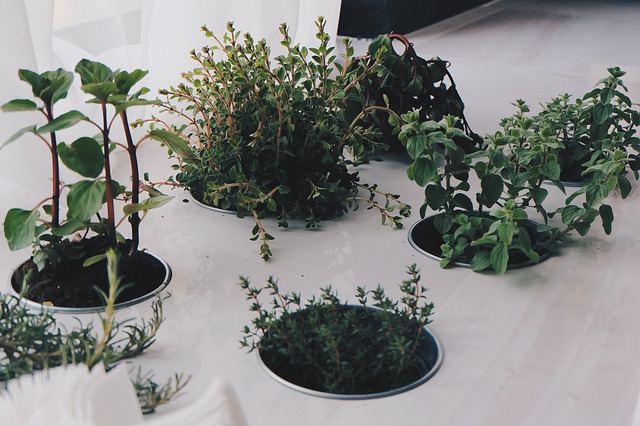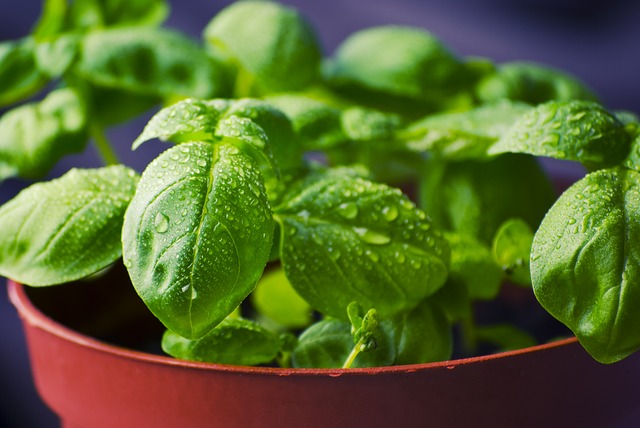It’s that time that everything is changing…from the winter blahs we move into the fresh promise of springtime! It may be too cold outside, but why not bring a little spring inside and create your own indoor herb garden?
Everyone can grow an indoor herb garden that will not only look great, but also add some zest to your home cooked meals. The ideal setting for an indoor herb garden is the kitchen, where you can snip fresh herbs and use them in dishes without skipping a beat. If you don’t have a spot in your kitchen, though, you can still grow herbs in any sunny room. Here are some tips on getting that started…
FIND A GOOD SUNNY PLACE
To grow well indoors, herbs need as much natural light as possible which means about 4 hours at least of sun daily. Windows that face south or southwest are your best bet at sun, though east- or west-facing windows also will do. North-facing windows are not bright enough.
If you’re not sure whether a spot gets enough light, try this test. On a sunny to partly sunny day, turn off all lights and periodically check on the natural sunlight. How much sun does the spot get throughout the day?
DRAINAGE GOES A LONG WAY WITH HERBS
Herb roots will rot if left to sit in too much water. Make sure to use a saucer, liner, or drain pan under the pot to catch water and protect your surface. A clay saucer lets moisture pass through, so opt for plastic, rubber, or metal instead.
Clay pots help with drainage, but they can dry out quickly. When furnace heat causes homes to get especially dry, try a glazed or plastic container that won’t dry out as quickly as clay.
Use a high quality potting mix, such as Miracle-Gro® Indoor Potting Mix, to pot your indoor herbs. And by all means, be sure your pots have drainage holes!
INDOOR TEMPERATURE CHECK
Many cooks grow herbs indoors during the winter when it’s too cold outside or too wet to dig in the dirt, but you can grow herbs inside any time of year. Indoor herbs prefer the same temperatures that most people do—around 65 to 70 degrees F—so if you’re comfortable, they probably are. At night, temperatures near a window may drop to 55 or 60, but most herbs like that, too. Keep leaves from touching glass to protect from getting nipped by cold.
BASIL IS PICKEY
Basil is trickier. Many kitchen gardeners love basil in their indoor garden. If you have plenty of sun and warmth indoors, basil should bo OK, but don’t keep it on a cool windowsill. Basil leaves will droop and fade after a short time in cool air. It prefers indoor temperatures in the 70s day and night.
Remember that the air next to a window will be cooler in winter (or hotter in summer) than your average indoor temperature, so adjust your plants accordingly. Dry air, whether from air conditioning or heating, is hard on most herbs, so if you can give them a weekly shower in the sink, they will be happier.
Indoor herb plants will probably stretch and be spindlier than plants in the outdoors, but they will still give you plenty of fresh clippings. Fertilize regularly with plant food, such as Miracle-Gro® Indoor Plant Food, if you are harvesting leaves regularly. (Be sure to follow directions!)
GROW EACH HERB IN A SEPARATE POT
Growing herbs together works well outside, but inside it is not recommended. In this way you can address each plant’s needs individually. For example, one herb may need special attention due to an infestation and this will eliminate hassles down the road if you need to treat it.
GOOD AIR FLOW
It is advised to keep each herb pot slightly slightly separated from each other so that there is good air flow between them (this also assits in eliminating the threat of disease spreading among your herbs).
TOP HERBS TO TRY IN YOUR GARDEN
Chives
Lemon Balm
Marjoram
Mint
Oregano
Parsley (Flat Italian Parsley or Curled Parsley)
Rosemary
Sage
Thyme (German Thyme or Lemon Thyme)
Whatever herbs you decide to plant, enjoy!
To receive similar content, “Like” us on Facebook @ https://www.facebook.com/niagarabuzz.ca











